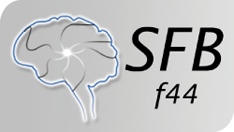Project:
Role of Cav1.2 and Cav1.3 Ca2+ channels for Parkinson's Disease (PD): pathophysiology and targets for neuroprotection
L-type Ca2+ channels (LTCCs) have recently emerged as novel drug targets for the treatment of Parkinson's disease (PD) with already licensed or new channel blockers. The concentrations of available drugs required for effective block, the LTCC channel isoforms in involved in PD pathophysiology and the mechanisms of neuroprotection are still not known. We recently identified human mutations that strongly point to a crucial role of brain LTTC gain of function (including the so-called Cav1.3 subtype) for the pathophysiology of psychiatric diseases (particularly autism spectrum disorders, ASD). This suggests a pathogenic and thus also potentially therapeutic role of brain LTCCs beyond PD.
In our project we create new tools and set up to assays to determine if LTCCs in the brain are blocked as effectively as Cav1.2 channels in the cardiovascular system. This wil allow predictions if already licensed drugs can be used for neuroprotection in PD or the therapy of selected ASD patients with Cav1.3 mutations. Moreover, we will create suitable mouse models that will allow us to study the functional consequences of human ASD mutations in different tissues, in particular the brain. Finally we ask the question if knockout of Cav1.3 channels or chronic inhibition of these channels leads to compensatory upregulation of other ion channels that could counteract their pharmacological action.
These highly translational questions will be addressed in collaboration with other members of the consortium. Our work has immediate relevance for better understanding of Ca2+-dependent human disease mechanisms and ongoing drug discovery in industry.






